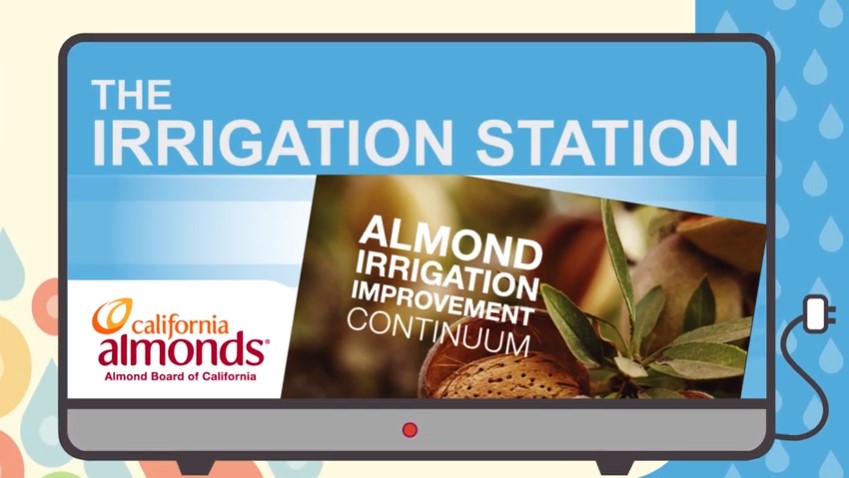While the onset of hullsplit signals that harvest season is near, it also marks the start of an unwelcomed orchard guest: hull rot. Almond hulls are susceptible to hull rot fungi from the beginning of hullsplit until the hulls dry, which is typically a month long, though the period may vary depending on fertilization and irrigation. Successful hull rot control is based upon effective strategic deficit irrigation and nitrogen management.
 Hullsplit occurs when the fruit begins to split (less than 3/8 inch) in the upper and outer parts in the southwestern quadrant of the tree.
Hullsplit occurs when the fruit begins to split (less than 3/8 inch) in the upper and outer parts in the southwestern quadrant of the tree.
Strategic Deficit Irrigation
Strategic Deficit Irrigation (SDI) is the practice of stressing almond trees at specific crop stages to reduce water use without impacting crop productivity. By managing SDI, growers can reduce hull rot by 60–90% and experience a more uniform hullsplit and earlier harvest. These factors may contribute to less crop damage from weather, late-season NOW flights and aflatoxin contamination.
The target period for stressing trees is from the start of hullsplit through 90% hullsplit, a period of about two weeks. The most accurate way to implement SDI is to use a pressure chamber to track and maintain slight tree water stress levels, between -14 bars and -18 bars, depending on the weather. Watch a short video from the Almond Board of California (ABC) about how to use a pressure chamber here.
Growers who do not rely on pressure chambers, particularly those with a history of hull rot and a visual baseline from which plant stress can be observed, may achieve similar results by irrigating at 50% of normal tree demand, using crop evapotranspiration (ETc) calculations during hullsplit. More information about this strategy is available at the UC Almond Doctor’s website.
Hullsplit typically occurs at the beginning of July in the early growing seasons and spreads to later growing seasons accordingly. However, onset of hullsplit can vary according to orchard conditions, with stress levels varying based on soil type and other factors. In shallow soils where trees may dry quickly, growers should initiate stress when blanks start to split, usually about a week before the onset of hullsplit. On deeper, well-drained soils, it can take up to 20-to-30 days to reach mild-to-moderate stress levels. In this case, growers may want to use the UC Almond Hull Split Prediction Model to determine when to initiate water stress. More information about the fundamentals of strategic deficit irrigation are explained in this short ABC video here.
Nitrogen Management
Almond Board-funded research has found that excessive nitrogen increases incidences of hull rot. It is critical that a proper nitrogen budgeting plan is in place for the growing season to ensure that only the necessary amount of nitrogen is applied. It is important to follow the nitrogen budgeting plan throughout the growing season, which is a function of crop load.
Find additional information on nitrogen budgeting and management at Almonds.com/Nutrients.
 Watch the Strategic Deficit Irrigation episode of ABC’s “The Irrigation Station” for effective tools and management of this critical practice during hullsplit.
Watch the Strategic Deficit Irrigation episode of ABC’s “The Irrigation Station” for effective tools and management of this critical practice during hullsplit.